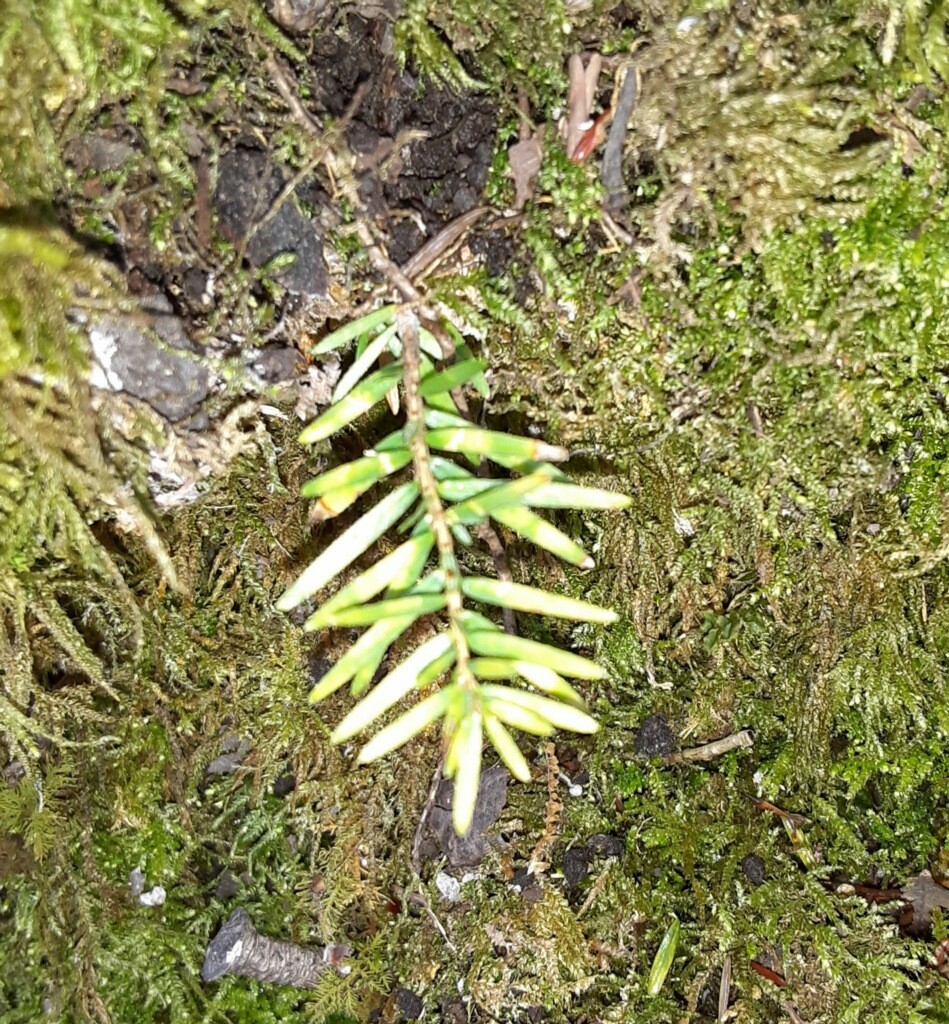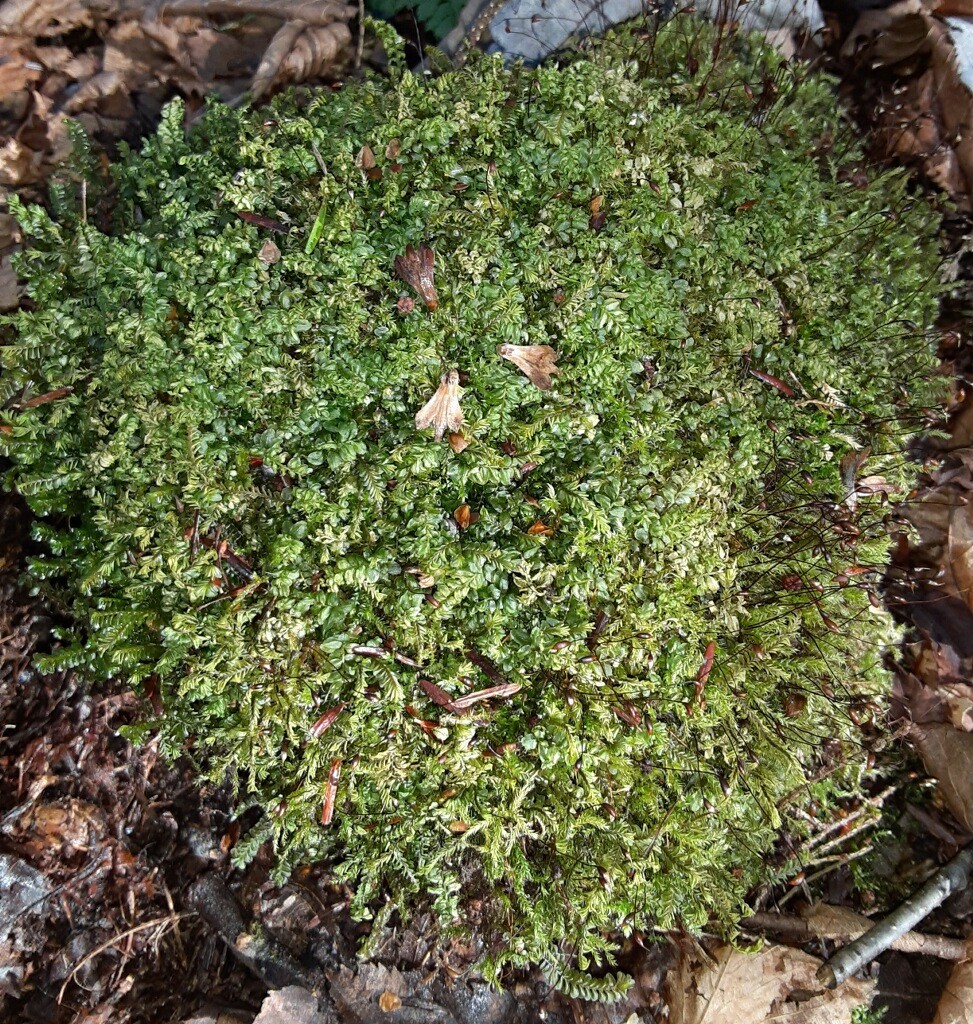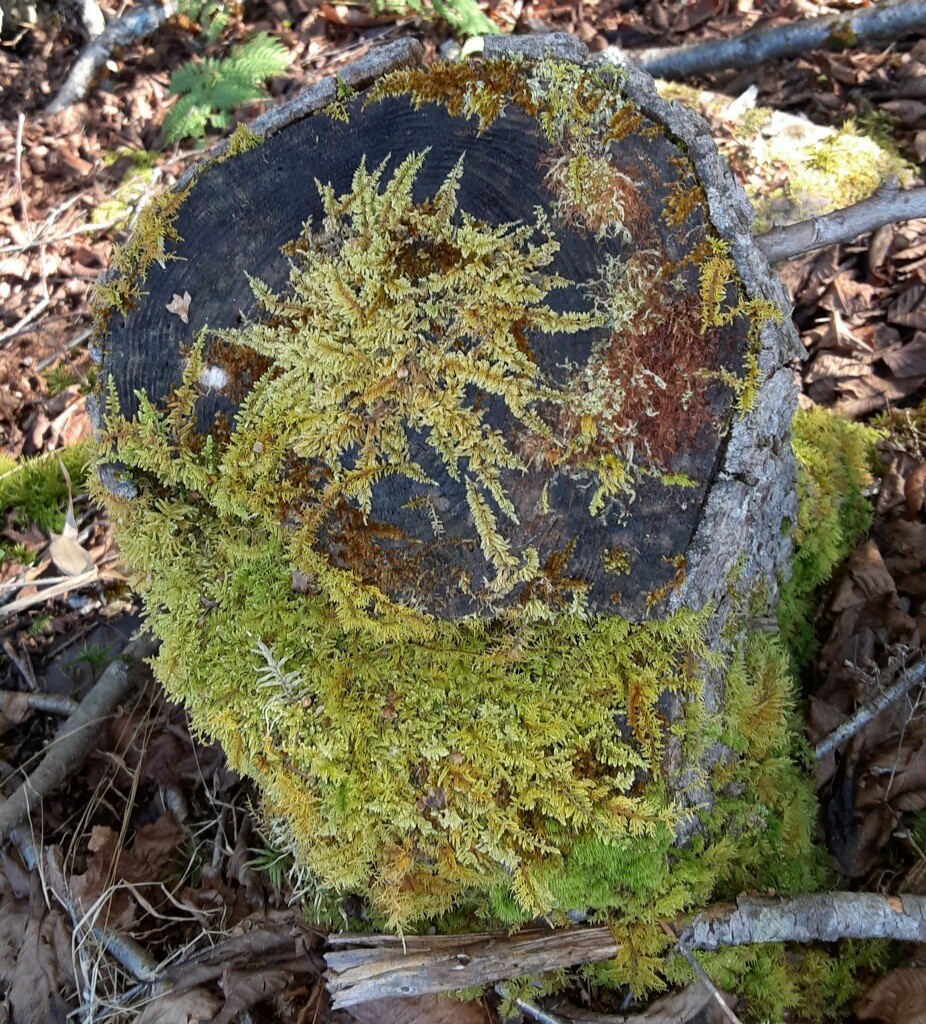By, Susan Sprout
Have you ever noticed mosses still growing as you take walks during our winter season? They seem to be everywhere – between slabs of the sidewalk, on brick foundations, tree trunks or under them, cliff sides, rocks, on dirt and rooftops. They have always amazed me, so underfoot, and many times, so unappreciated! Having diverged from green algae about 500 million years ago, they evolved to become an extremely important part of all land ecosystems. They promote soil formation with the addition of dead tissues, grow where other plants having roots cannot, hold moisture to use and pass on to other organisms. Mosses are Bryophytes, members of the Phylum Bryophyta, along with the other ancient plants, Liverworts and Hornworts. All are nonflowering (using spores to reproduce), have stem-like rhizoids (rather than true roots), diffuse water and nutrients through cell walls (instead of having a system of veins). Many plant scientists consider them the “coral reefs of the forest” for the benefits they provide, even though small and having leaves only one cell thick. Mosses play important roles storing and filtering nutrients and water that forests need to survive and grow.

Mosses contain chlorophyll to make their own food, using sunlight and the process of photosynthesis, in order to grow and reproduce. They “exhale” oxygen into the atmosphere as a by-product. They provide food, water, shelter and cover for many small invertebrates, like insects. Humans have not been shy about reaping and using mosses for many of their requirements: fuel, insulation for dwellings and clothing, bedding, diapering, bandaging, roofing, gardening. One thing we do not use moss for is food. The complex carbohydrates of most mosses would take more energy to digest than we would gain from eating them! However, research has discovered them to be anti-bacterial, anti-fungal, and anti-viral. Folks living in London, England, are using different kinds of mosses in structures they call artificial trees. Where they are positioned throughout the city, the moss containers absorb particulates, carbon dioxide and nitrogen oxides from the atmosphere while producing oxygen and keeping the surrounding air cooler. It is possible that mosses may provide yet to be discovered solutions to problems caused by climate fluctuations. They are much better equipped than other plants due to their worldwide distribution and their ability to soak up and hold moisture.

A downside for the mosses in this arrangement is a slow growth rate, a quarter inch to two inches per year depending on the species. We will need to be judicious in our harvesting of mosses. When all of the moss is stripped from a log or rock, it can take twenty years for it to recover. Leaving one-third to one-half of the moss in patches can shorten the recovery time to ten years. Log moss is one of the ten most sought-after, non-timber products in Pennsylvania. Both the PA Game Commission and DCNR prohibit removal of plants from their lands.



